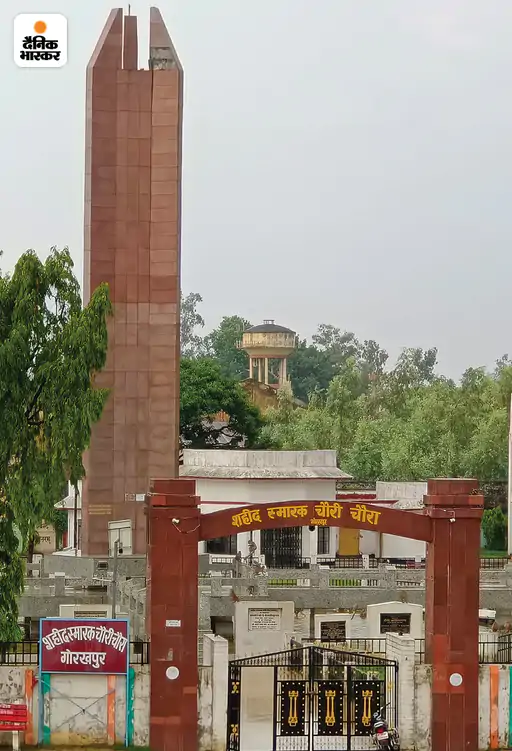That's why we are free... the fourth story of the series...
On February 10, 1922, in Bardoli taluka of Gujarat, Mahatma Gandhi had been sitting quietly in the corner since his morning prayer. Nehru was in jail and there was only one issue of discussion among the rest of the workers including Patel - the Chauri-Chaura incident in UP on 4 February 1922. This was the same incident in which 22 policemen were burnt alive by an angry mob.
Then the non-cooperation movement was at its peak and there was a lot of support from all over the country. Gandhiji suddenly got up and proposed to end this movement. Some workers remained silent, but most flatly refused. Then Gandhiji fell silent, but after two days i.e. on 12 February, he went on a fast for 5 days, withdrawing the non-cooperation movement.
In fact, Chauri-Chaura has been in controversies from the very beginning. When Gandhiji withdrew the non-cooperation movement, his decision was strongly criticized by personalities like Subhash Chandra Bose, Motilal Nehru, CR Das and Rabindranath Tagore. Now after 100 years, Chauri-Chaura is in controversy due to its martyrs' memorial.
We will know what was the dispute then and what is the reason for the dispute now, but before that let me take you to the place where Chauri-Chaura incident took place…
This is the police station where 22 policemen were burnt alive by an angry mob on February 4, 1922, 100 years ago.
Rail tracks divide martyr memorial and mausoleum
When I reach Chauri-Chaura, about 26 km from Gorakhpur city, I see the police station in which 22 policemen who were hiding were burnt alive by the mob. This police station started in 1857 is like a normal police station today. Confiscated vehicles are parked in the courtyard, there is a movement of the complainants.
Even today, in its old part, there is a burial place of those policemen who died 100 years ago. It was built by the British in 1924 itself. A short distance away from it, the memorial of the martyrs of Chauri-Chaura has been built.
Railway tracks distribute to the graveyard of the policemen and the martyr's memorial. These are the same tracks where the police fired on the revolutionaries and violence broke out. The railways are still using these tracks today.
Actually Chauri-Chaura were two separate villages. A railway traffic manager named these villages together and started a railway station in January 1885. In the beginning, only the name of the railway platform and warehouse was Chauri-Chaura.
The tower of the martyr memorial across the tracks was built by the people of Gorakhpur district by collecting donations in 1973, about 51 years after the incident. The 12.2 meter high minaret was built at a cost of Rs 13,500. On either side of it a martyr was shown hanging from the gallows. which was later changed. It is looked after by the Chauri-Chaura Martyrs Memorial Committee.


Comments
Post a Comment